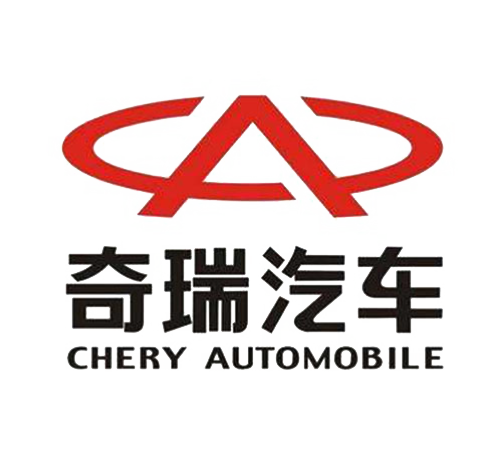The evolutionary history of Chery

The rise of Chery is indeed a legend among domestic car brands, comparable to a heartwarming story of a “grassroots comeback”. From a small factory to a Fortune 500 company, with over 14 million global users, Chery’s success is inseparable from its core philosophy – technology-oriented and independent research and development, as well as the strategic vision and indomitable spirit of its founder, Yin Tongyue. The following is an analysis of Chery’s rise process and reasons from several key points:
1:Technology-driven enterprise, core competitiveness through independent research and development
Chery has always prioritized technological research and development from the outset, which was particularly commendable in China’s automotive industry during the 1990s. At that time, most domestic automakers relied on joint venture models, and others controlled their core technologies. Yin Tongyue, under pressure, purchased a Ford engine production line that was about to be scrapped for 30 million US dollars. He led his team to overcome the foreign technological blockade and managed to build the production line, producing 1.6L four-cylinder engines. This spirit of “daring to fight and strive” has laid the technological foundation for Chery.
In 2002, Chery invested approximately 1 billion yuan to collaborate with the Austrian AVL Company in the research and development of 18 types of engines (ranging from 0.8L to 4.2L), covering the demands of various vehicle models. Such a large-scale technological investment was almost unmatched among domestic brands at that time. Chery’s engine technologies, such as the 1.6T (nearly 200 horsepower) and 2.0T (254 horsepower) in the Tiggo 8, not only offer strong performance but also take fuel economy into account. In addition, Chery has mastered three types of transmission technologies: CVT, dual-clutch, and AT, completely breaking away from its reliance on foreign technologies. This “tech enthusiast” gene has enabled Chery to always remain competitive in core components.
2:Precise positioning to meet market demands
Chery has a deep understanding of market demands and a precise product layout. For instance, the Chery QQ, launched in 2003, quickly became a “national car” with its cute and compact appearance and affordable price. Its cumulative sales exceeded one million, making it a synonym for domestic cars of that era. Launched in 2016, the Arrizo 5 learned from the overpriced Arrizo 7 and quickly captured the sedan market with its reasonable price and high cost performance. It sold nearly 130,000 units in 10 months and was known as “the Great Wall in the north and Chery in the south” along with the Haval H6. The Tiggo series of SUVs covers both essential needs (Tiggo 3 and 5) and family vehicles (Tiggo 7 and 8), catering to the demands of different consumer groups.
3:Internationalization strategy to seize overseas markets
Chery’s international perspective far exceeds that of its peers. In 2001, while many domestic brands were still exploring the domestic market, Chery had already begun to export automobiles, becoming a pioneer in China’s auto exports. Today, Chery exports to over 80 countries and regions. In 2023, it exported more than 700,000 vehicles, accounting for over one-seventh of China’s total auto exports. The ExEED brand has been lackluster in the domestic market, but it has become highly sought-after in Russia, the Middle East, and other regions. For instance, the EXEED Rocker is priced as high as 400,000 yuan overseas, competing with the Mercedes-Benz GLE. This success in overseas markets not only brings considerable profits but also enhances Chery’s global brand influence.
4:Resilience and Breakthrough in Adversity
Chery’s rise has not been smooth sailing. In the early days, without the qualification to manufacture vehicles, it could only be affiliated with SAIC, facing the predicament of “long queues for vehicle repairs”. Under the technological blockade, the team gritted their teeth and relied on their efforts. In the early days of the new energy era, Chery missed the best opportunity for layout due to its excessive focus on fuel vehicle technology. However, Chery always manages to find a breakthrough in difficult situations. For instance, in the face of lagging in the new energy wave, Chery promptly adjusted its strategy, launched new energy brands such as iCAR, and maintained an average monthly sales volume of 200,000 units in 2024, with an export share exceeding 40%, demonstrating strong adjustment capabilities and market adaptability.
5:Brand Diversification and Market Misjudgment
In 2018, Chery launched two major brands, ExEED (high-end) and JETOUR (affordable), attempting to cover different markets. However, Chery, which has been overly focused on technology, has neglected marketing in the new era, resulting in the lack of popularity of the Exeed in China. This contrasts with the aggressive strategies of brands like BYD and Geely in new energy and marketing. However, Chery did not stop because of this. Instead, it made up for its domestic shortcomings through success in overseas markets, demonstrating its strategic flexibility.
Why is Chery considered the most promising domestic brand?
- Technological autonomy: From engines to gearboxes, Chery has always adhered to independent research and development, getting rid of the risk of being “strangled”.
- Market performance: From QQ to the Arrizo and Tiggo series, Chery accurately grasps market demands and creates multiple best-selling models.
- Global influence: Leading in export volume, outstanding performance in overseas markets, and brands like ExEED are benchmarked against luxury models on the international stage.
- Breaking through adversity: No matter whether it is technological blockades, qualification restrictions, or mistakes in the transition to new energy, Chery has always found a way out.
Summary
Chery’s rise is a history of striving from “frustration” to “ambition”. Yin Tongyue’s strategic vision, technology-oriented philosophy, precise market positioning, and international foresight have jointly forged the legend of Chery from a small factory in Wuhu to a Fortune Global 500 company. Despite taking detours in new energy and marketing, Chery remains a leader among domestic brands thanks to its technological accumulation and success in overseas markets. If Chery can accelerate its catch-up in the new energy sector and make up for its marketing shortcomings, it is expected to make further progress on the global stage in the future.
